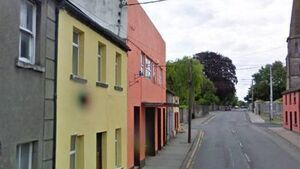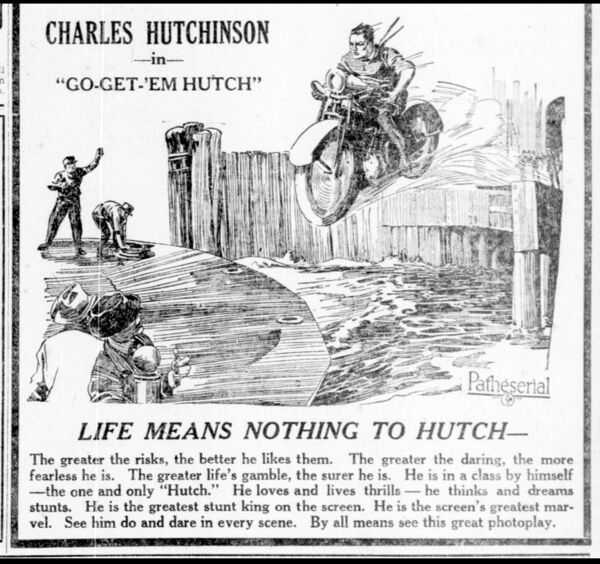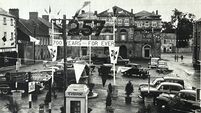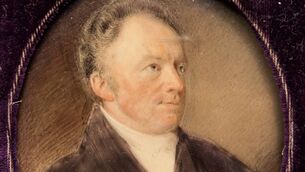When Athy went to the movies 100 years ago

The site of the former Picture Palace on Athy's Offaly Street
IN one of my earlier articles I wrote about the Athy Picture Palace, the first purpose-built cinema opened on Offaly Street on the site of a former Malt House by Captain Hosie.
I had always understood that the Picture Palace had opened in or around 1925 but I was pleased to find on the website www.earlyirishcinema.com that the Athy Picture Palace had a grand opening performance on Monday 20 October 1924 where cinema-goers, for the price of one shilling and six pence or nine pence, were treated to a film, .
Set in the goldmines of Alaska, it was inspired by Rex Beach’s novel of the same name published in 1903. In tandem with the main feature, cinemagoers could also enjoy the serial .
The hero of the serial was Hutch who rescues a ship-owning heroine from the clutches of a crooked lawyer who was the head of a crime syndicate. That serial was a little before my time but I can remember attending the Sunday afternoon offerings of the Hopalong Cassidy episodes featuring a rough-talking cowboy hero played by the actor, William Boyd, who appeared in sixty-six films as the character from 1935 to 1948.
The 1924 US presidential election followed a little over two weeks afterwards in which the Republican Candidate, Calvin Coolidge defeated the Democratic candidate John Davis.
Coolidge had previously been the Vice President and had succeeded, the incumbent, Warren G. Harding on Harding’s death in 1923. I was amused to see an article in the Belfast Newsletter around the same time stating that ‘The wireless and the cinema had been employed to reach the voters, and never before has public interest been so greatly aroused’. Plus ça change, plus c’est la même chose’!
A century on from the opening of the Picture Palace, I wonder what one would have found in Athy in that very year. Commercial life in the town was dominated by Athy’s public houses. It might surprise readers to know that at the time Athy boasted no less than forty local hostelries all of which were open for business. As late as 2001, there were 26 public houses in the town.

1924 saw the closure of Hannon’s Mill on the Bridge at Duke Street, Athy while the oldest local industry, brick making, was under severe strain.
From a time in which the town could boast of having twelve or so brickyards, there was only two left in 1924, the Athy Tile and Brick Company at Barrowford and Hosie’s Brickyard in Coursetown.
John Conlan, a farmer's party TD for Kildare, said in the Dáil in January 1924.
“In the Athy District, my constituency, several brickyards were in operation up to a comparatively short time ago … these works turn out the very best brick. Some of the old squares in Dublin were built of Athy Brick and that will go to show their durability”.
That speech was made by Deputy Conlan in his support of a bill going through the Dáil to compel contractors to use more Irish materials but whether such Bill was ever passed, I am unsure.
Despite the rise of public interest in the cinema, cultural events of a more nationalist bent were still popular. The Tailteann Games was established in 1924 inspired by those held thousands of years ago in Tara, Co, Meath.
The organisers of the event cleverly staged the sporting elements to coincide with the Paris 1924 Summer Olympics and some of the greatest stars of the Olympics competed at the games, including triple gold medallist Johnny Weissmuller, of Tarzan fame, who swam in the Phoenix Park.
The only medallist I can find with an Athy connection is Richard Long, the portrait landscape painter. He was awarded a Bronze Medal for a fire screen which he designed and made depicting the death of Cú Chulainn.
He would later find employment as a woodwork constructor at the Athy Technical School in 1929. He only remained there for two years and Theo Snoddy in his book, ‘Dictionary of Irish Artists’ published in 2002, notes that Long wrote “I left due to the fact that there was an awful unfairness between Protestants and Catholics. One sect occupied one side of a room, the other sect the other side. If I was giving instructions to a Protestant, a Catholic would call me and vice versa. No wonder I cleared out”.
How reflective this was of the relations between the religions in the town at the time is hard to know but his comments surprised me. Richard Long departed Athy to take up a post as an art master in Clonmel Technical School playing a prominent role in the art world in Tipperary until he died in 1960.





